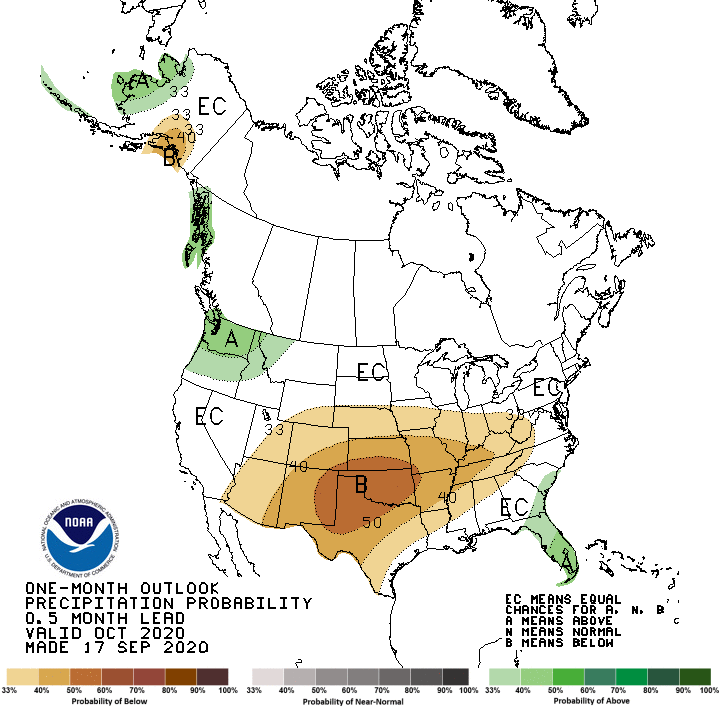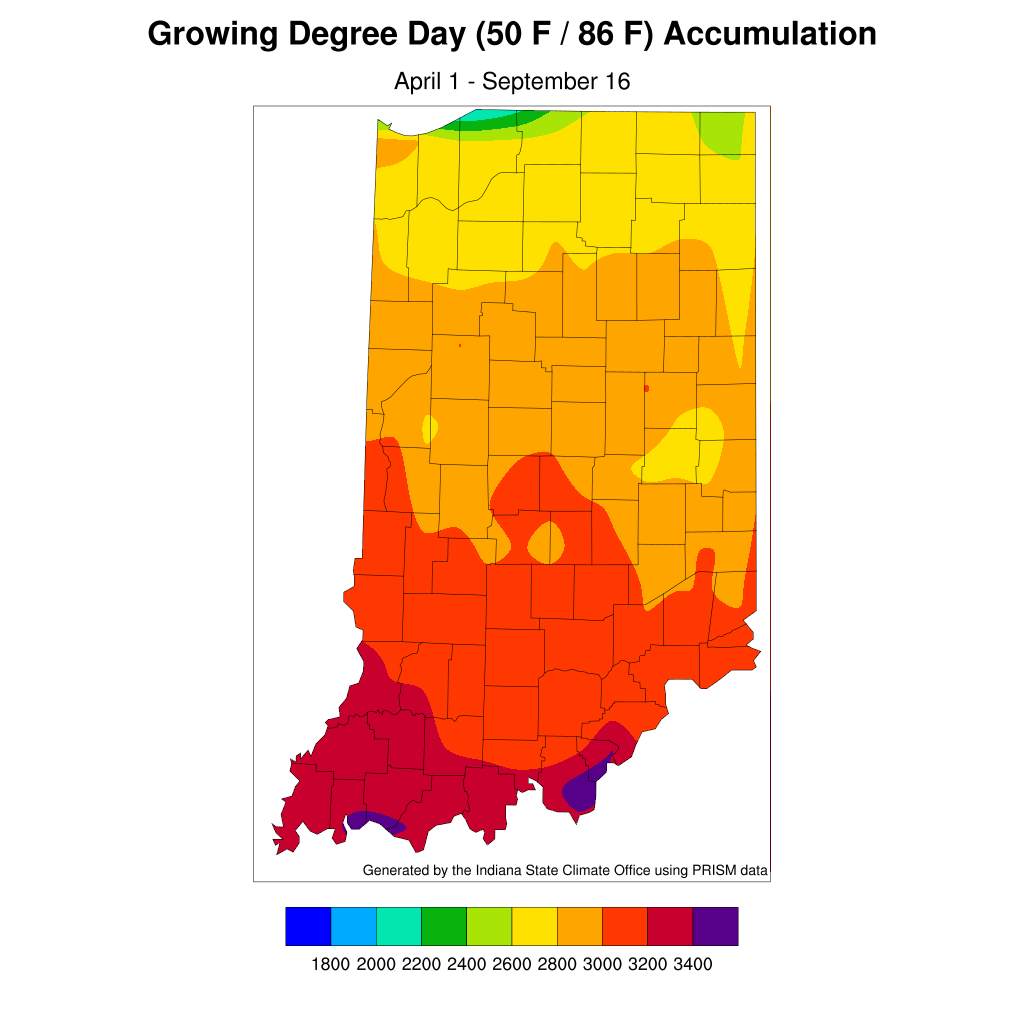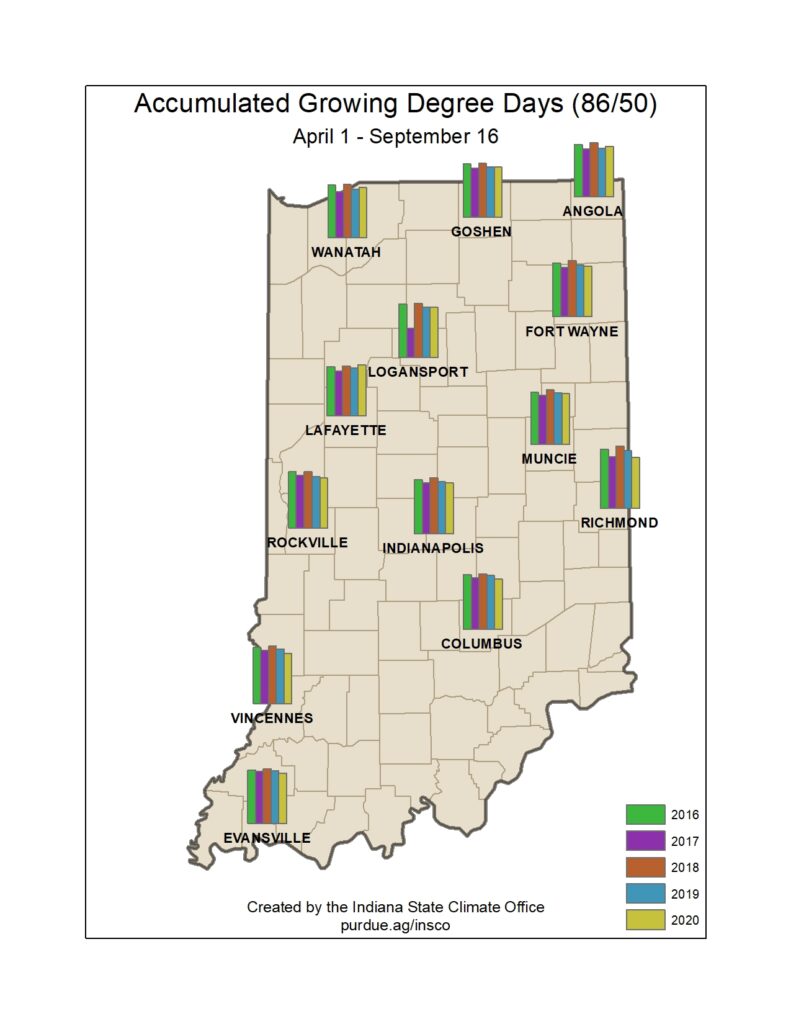The rain events northern Indiana saw last week may be the last significant precipitation seen in Indiana for the next several weeks. The US Drought Monitor has already placed most of the state in abnormally dry to moderate drought conditions and there doesn’t seem to be much relief in sight. South-central Indiana’s precipitation amounts so far for September rank as low as the 2nd percentile when compared to the 1981-2010 climatology period (Figure 1). Fortunately, temperatures have not been too unseasonably warm to enhance the evaporative demand from the atmosphere, but there are still many crops hoping to soak up as much end-of-season moisture as they can before harvest. The climate outlooks from the national Climate Prediction Center are indicating significant confidence for below-normal precipitation through the first week of October and the monthly precipitation outlook for October is indicating slight confidence for below-normal precipitation throughout the month (Figure 2).
It is still too soon to know if the first hard freeze (temperature at or below 28°F) will occur earlier than normal this year. However, if you are interested in learning more about the range of dates when the first hard freeze occurred in your area, check out the Midwestern Regional Climate Center’s Vegetation Impact Program’s suite of tools – particularly their freeze maps (https://mrcc.illinois.edu/VIP/frz_maps/freeze_maps.html). Users can see maps of the dates of the earliest, median, and latest hard first freezes in the fall, for example. They can also explore these products through the mapping interface where one can zoom in closer to a location and click on the nearest station for further information (https://mrcc.illinois.edu/gismaps/freeze_guidance.htm).
As the growing season approaches its end, Figures 3 and 4 show the accumulation of modified growing degree days (MGDDs) across Indiana since April 1st and how this year’s accumulation compares to past years since 2016. For northern locations, 2020 MGDDs ranked in the top 3 of the past 5 years, whereas most southern locations saw 2020 MGDDs ranked in the bottom third, if not lowest of recent years.






